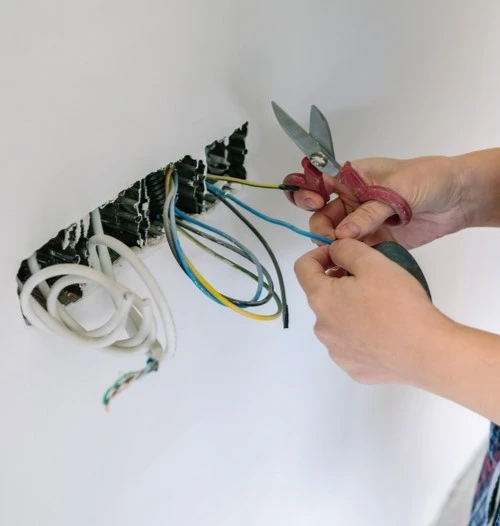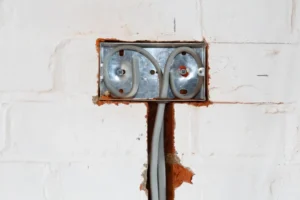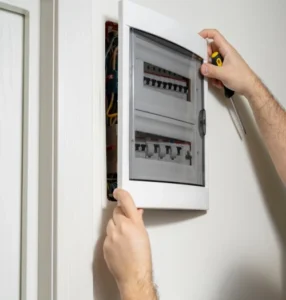What is Electrical House Rewiring?
Electrical house rewiring is the process of replacing old or outdated electrical wiring in a home with new wiring. This is done to ensure the safety and efficiency of the home’s electrical system.
Signs that Indicate the Need for Electrical House Rewiring
There are several signs that indicate the need for electrical house rewiring. These include:
- Frequent tripping of circuit breakers
- Flickering or dimming lights
- Outlets that are hot to the touch
- Burning smells or sparks from outlets or switches
- Old or outdated wiring (such as knob and tube wiring)
Benefits of Electrical House Rewiring
There are several benefits to rewiring a house, including:
- Increased safety: New wiring is safer and less likely to cause electrical fires or shocks.
- Improved efficiency: New wiring can handle more electrical load and is more energy-efficient.
- Increased home value: Upgrading the electrical system can increase the value of a home, especially if it is an older home with outdated wiring.
Preparing for Electrical House Rewiring
Choosing the Right Contractor
Choosing the right contractor is crucial when it comes to electrical house rewiring. Look for a licensed and insured electrician with experience in rewiring homes. Check their references and reviews, and make sure they are familiar with the approved document building regulations.
Getting Permits and Inspections
Before starting the rewiring process, it is important to obtain the necessary permits and inspections from the local building department. This ensures that the work is done safely and up to code.
Creating a Plan and Budget
Create a plan and budget for the rewiring project. This should include a detailed list of the work that needs to be done, as well as a timeline and cost estimate. Be sure to factor in any additional costs, such as upgrading the electrical panel or adding new outlets.
The Electrical House Rewiring Process
Inspection and Assessment
The first step in the rewiring process is to inspect and assess the current electrical system. This includes identifying any outdated or unsafe wiring, as well as determining the electrical load of the home.
Removal of Old Wiring
Once the assessment is complete, the old wiring is removed. This can be a messy and time-consuming process, as it involves cutting into walls and ceilings to access the wiring.
Installation of New Wiring
After the old wiring is removed, new wiring is installed. This includes running wires through walls and ceilings, as well as installing new outlets and switches.
Upgrading Electrical Panels and Outlets
As part of the rewiring process, it may be necessary to upgrade the electrical panel and outlets. This ensures that the electrical system can handle the increased load and is up to code.
Testing and Inspection
Once the rewiring is complete, the electrical system is tested and inspected to ensure that it is safe and up to code.
Ensuring Safety and Efficiency
Proper Grounding and Bonding
Proper grounding and bonding are essential for a safe and efficient electrical system. This involves connecting the electrical system to the ground and ensuring that all metal components are bonded together.
GFCI and AFCI Protection
Ground Fault Circuit Interrupter (GFCI) and Arc Fault Circuit Interrupter (AFCI) protection are required in certain areas of the home, such as bathrooms and kitchens. These devices protect against electrical shocks and fires.
Surge Protection
Surge protection is important for protecting sensitive electronics from power surges. This can be done through the use of surge protectors or whole-house surge protection systems.
Upgrading Lighting and Appliances
Upgrading lighting and appliances can also improve the safety and efficiency of the electrical system. This includes using energy-efficient bulbs and appliances, as well as installing proper ventilation for appliances such as dryers and stoves.
Maintenance and Upkeep
Regular Inspections and Maintenance
Regular inspections and maintenance are important for ensuring the safety and efficiency of the electrical system. This includes checking for loose connections, frayed wires, and other potential hazards.
Upgrading Electrical System as Needed
As technology advances and electrical needs change, it may be necessary to upgrade the electrical system. This can include adding new outlets or circuits, or upgrading the electrical panel.
Tips for Electrical Safety
There are several tips for electrical safety that homeowners should follow, including:
- Never touch electrical wires or outlets with wet hands
- Do not use appliances with frayed cords or damaged plugs
- Do not overload outlets or circuits
- Use surge protectors for sensitive electronics
Cost and Timeframe
Factors that Affect the Cost of Electrical House Rewiring
Several factors can affect the cost of electrical house rewiring, including the size of the home (measured in square feet), the age of the home, the complexity of the rewiring project meaning the amount of different switches, outlets, lights and appliances, and the cost of materials.
Average Cost of Electrical House Rewiring
The average cost to rewire a house is between £4,450 – £8,000. However, this can vary depending on the factors mentioned above.
Timeframe for Electrical House Rewiring
The timeframe for electrical house rewiring can vary depending on the size and complexity of the project. However, most rewiring projects take between 3 and 10 days to complete.
Conclusion
Electrical house rewiring is an important process for ensuring the safety and efficiency of a home’s electrical system. By understanding the signs that indicate the need for rewiring, choosing the right contractor, and following proper safety guidelines, homeowners can ensure that their home is safe and up to code. While the cost and timeframe for rewiring can vary, the benefits of upgrading the electrical system are well worth the investment both for safety and efficiency.


